Knowing your boat and how to trim your sails to best achieve the 3 Modes of upwind sailing are crucial skills to have for the best performance of your boat.
For the Racer
Being able to effectively ‘mode’ your boat at any time on the race course can greatly improve your racing performance. Choosing which mode to use depends on a number of factors but is generally a combination of wind, tide, opposition and where you are on the race course.
Sail trim is pivotal to the modes and before focussing on the modes themselves I strongly encourage you to have a thorough read of my Sail Trim Notes. Adapt them to your boat and make sure everyone in the team is familiar with how to best trim your sails.
In executing the trim required to achieve the maximum potential from each mode, communication is critical hence the importance of the ‘trim cycle’ to be sure the flow of information between the team is contributing to the best performance.
For the Cruiser
Being able to mode your boat while passage sailing can greatly improve the efficiency of your passage making and navigating around obstacles and obstructions much more simple. It will also make your boat easier to sail in those passages by reducing the tacks and gybes executed and limit your sail handling.
By efficiently and effectively configuring your boat you can reduce your passage times and make your passage more pleasurable. By applying the tips and tricks in my sail trim notes you can also make your boat handle better and increase the overall efficiency of your passage sailing.
HIGH Mode – Pointing closer to the wind but going slower
VMG Mode – The best VMG for your boat
FAST Mode – Pointing less into the wind but going faster
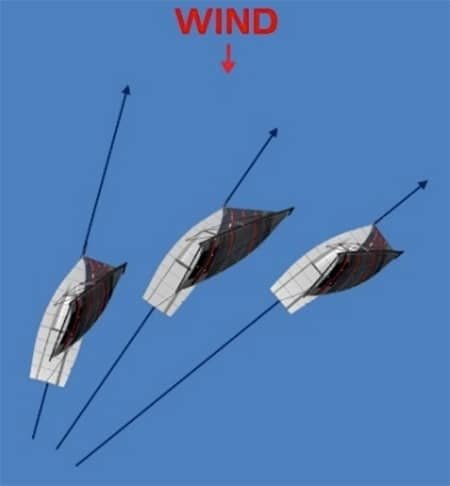
Reduction of angle of attack by pointing your boat closer to the wind:
Less lift (sails)
More leeway (less keel grip)
Going slower
Reduction in heel angle/power
When do I use it?
Holding a lane off the start or a lee bow
Making life hard for your opponent(s)
Controlling your opponent(s)
Options by being able keep sailing in clean air
Staying in phase where height is your friend
To make a mark when marginal lay line
How do I achieve it?
Pull your sails on tighter (sheet tension) reducing twist
Pull your sails closer to centre line (sheeting angle) using jib tracks, inhauler, traveller
Reduce entry angle (halyard/cunningham)
Steer the boat in a feathered mode
Reduce righting moment (move crew weight)

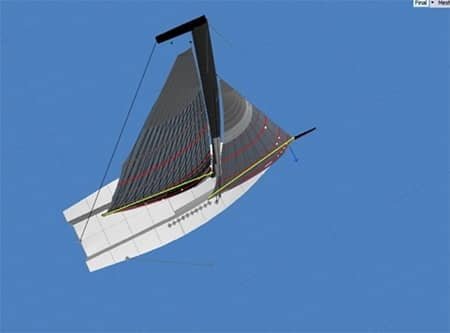
Velocity Made Good
The best VMG for your boat
Balance of good height and speed
Fastest combination of height and speed
Optimum heel angle/power
When do I use it?
Most of the time
Sailing in clear air
Options open
Staying in phase
How do I achieve it?
See the Sail Trim seminar notes!
Trimming your boat for best speed and height
Best VPP (Polar) data for your boat
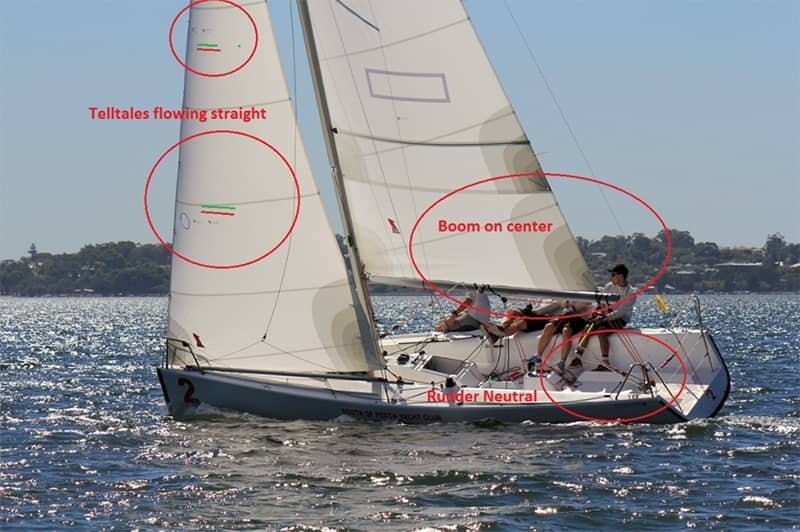
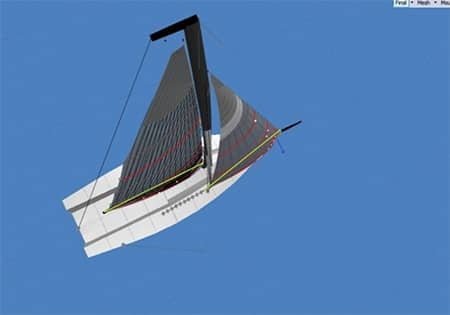
Increase of angle of attack…i.e. lower to the wind
Going faster
Minimum leeway (max keel grip)
When do I use it?
Fast Forward to the next shift (header)
Making life hard for your opponent(s) rolling over the top giving them dirty air
Controlling your opponent(s) forcing them to tack
Staying in phase where speed is your friend
Gives you options!
How do I achieve it?
Ease your sails (sheet tension) increasing twist
Ease your sails off centre line (sheeting angle) using jib tracks, inhauler, traveller
Increase entry angle (halyard/cunningham)
Reduce drag (depth via outhaul, mast bend, forestay sag, jib car)
Steer the boat in a footed mode


The boat to windward is in fast mode to try and get over the top of the boat to leeward. Note the jib telltale positions.
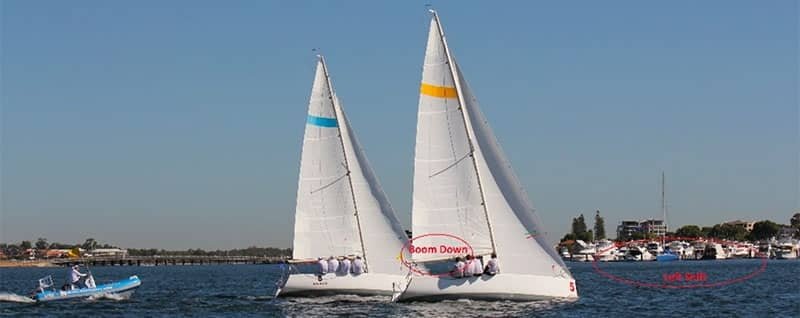
The windward boat has successfully progressed over the top, thus preventing the leeward boat to tack. Significant given the left wind shift approaching!

“Being fast makes you look like a tactical genius”
Mike Fletcher
Signup our newsletter to get updates, information, news, insight or promotions: